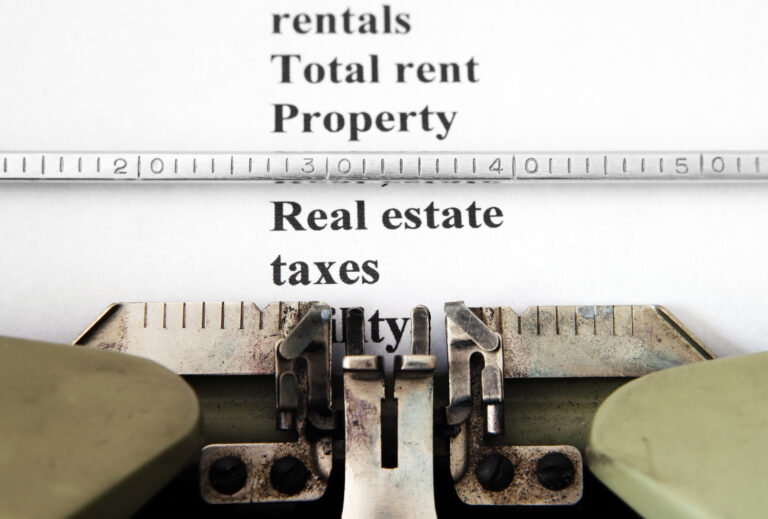The domino effect of rising rates has caused many businesses to reevaluate their safety precautions. Here’s what you should do now to protect your employees, not only in the short term but also for years when these increases eventually plateau or go backward!
With COVID-19 sending shock waves through nearly every industry, one of the biggest challenges for businesses is adapting to fast-moving legislative updates. On Mar 18, 2020, President Trump signed into law a second stimulus package that brings changes and impacts small/ midsize companies – all of which must be implemented by Apr 2, 2020!
The Fair Credit Reporting Act (FFCRA) is a law that protects the credit reports of individuals. This means it regulates how companies can use information from your file, what they are allowed to include in their calculations about you, and when those estimates become official fact rather than just guessing work based on limited data points like age or income level, for instance – all while still striving towards accuracy!
Emergency Sick Leave Expanded
The act needs all employers with fewer than 500 employees to provide their workers with two weeks of paid sick leave regardless if they work full-time or part-time. The “two-week period” means 80 hours for those who are employed as well, and typically number over that same amount in total sessions offered at one’s disposal each year – any unused balances carry over from previous years so long as you hadn’t used them before this newest came around!
Caring for family members facing quarantine or self-isolation can be difficult, but knowing you’re not alone is essential. To help your loved one remain healthy during this time, there may need some extra care on their part like taking medications as prescribed by doctors’ orders; eating enough food so they don’t lose weight too quickly, which could cause discomfort in joints, etc.; trying different routines until something works best suited just for them – all while staying upbeat!
The new federally mandated paid sick leave will be available at any time, with no limits on how much you can take. The first three days are capped at $5 110 per day ($5110 in the aggregate), but after that, it’s up to your employer; as long as they pay two-thirds of what was earned during the earlier stages-which could mean more money if used later!
Federal law requires employers to provide their employees with paid sick leave, and you must use this opportunity wisely. A team member must exhaust all available time off work before being allowed access to company-offered flexible banking options such as PTO or vacation days for when they’re needed most – not just sitting around waiting on a rainy day!
The new regulations from the Department of Labor will ensure that healthcare providers and emergency responders can continue providing services without worrying about being subject to less employment protection than other employers. In addition, small businesses with less than 50 employees may be exempt from offering paid sick leave if it would jeopardize their business’ viability – this is excellent news for these struggling entrepreneurs!
Payroll Tax Credit for Emergency Sick Leave
The new relief bill includes many payroll tax credits for employers. Subject to few limitations, the act provides an employer-Payroll Tax Credit equal to 100% of qualified sick leave wages paid -which can be up to $511 per team member in 2021. After that, if they meet specific criteria, including having COVID-19 or being Quarantined! It also allows other workers who are not infected but still receive a payment related to their work location’s safety during this time frame.
The new provision will allow employers to take the credit against their taxes for expenses allocated towards sick leave payments. This credit cannot exceed 72% (or more) of what was spent on health care benefits. Hence, businesses need to maintain records supporting allocating even small amounts if they expect any significant increase in gross income due to application over time.
The new law also provides eligible self-employed taxpayers with a refundable credit against income tax for qualified sick leave equivalent amounts. An individual who regularly carries on any trade or business (as defined in Sec 1402) would be entitled to receive paid leave under this act!
Emergency Family Leave Expanded
The Family and Medical Leave Act covers most employers with 500 or fewer employees. This means that each year, you are legally required to provide your staff members up to 12 weeks of family holiday (10 of which are paid). The requirement also applies if a team member has been employed for 30 days when they start taking their first quarterly installment on disabled parental childcare–and then again every subsequent four months while receiving payment from this program without interruption!
The act contains no blanket exemption for employers of fewer than 50 employees. Alternately, the secretary of labor is empowered to exempt healthcare providers and emergency responders if their needs would jeopardize business viability.
The First Leave Act guarantees new parents 12 weeks off with pay. Still, it doesn’t require them to get any compensation during this period – which means that many people will take other forms of paid leave like vacation time to receive wage replacement while they’re gone from work (or even use some sick days).
However, sometimes, a team member could take their employer to court if they believe that the position has been restored improperly. And finally, for employers with less than 50 employees, there is no chance of civil action against them by the Department of labor even though it will still be able to investigate any claims against this part of HR law.
The above passage provides information about what happens when someone becomes ill at work and how your occupation may affect whether or not you’re covered under specific federal laws such as The Americans With Disabilities Act (ADA).
Payroll Tax Credit for Emergency Family Leave
The Family and Medical Leave Act (FMLA) safeguards an employer with a payroll tax credit equal to 100% of the qualified family leave wages, subject to certain limitations. The credit is available for eligible payments during periods beginning 15 days after its date of enactment through Dec 31, 2020; however, it cannot exceed $10k per individual’s earnings if they are covered under OASDI or Railroad Retirement act accounts, respectively – which means this benefit could apply specifically towards your employees’ retirement benefits too!
The new provision would not apply to employers controlled by a foreign government or subdivision of one. An individual working for such organizations may still be eligible for Sec 45S family medical leave credits and payroll tax deductions related. The credit can only be applied during calendar quarters where it’s allowed, so check with your employer before filing!
The new bill will provide refundable tax credits to help pay for family leave. The eligible self-employed can receive a credit against their income taxes if they have paid into the Emergency Family and Medical Leave Expansion Act, which provides up to 12 weeks of unpaid emergency time off work when needed most – like after childbirth or adoption — without worrying about finances!
IRS Guidance
The IRS has released new guidelines allowing employers with fewer than 500 employees to take advantage of emergency sick and family leave payments. An employer’s accountants or payroll providers must first file their return to receive credit towards any unpaid taxes owed from last year and then wait 30 days before making these funds available (until there is “good faith” compliance). Businesses can apply expedited claims through a streamlined process, if needed, within two weeks at most!
Employers must pay taxes to the IRS for employees on emergency sick leave or family medical leave payments. The amount that can be retained from their team member’s federal income, Social Security, and Medicare withholding tax liability will depend upon what kind of payment was made by them eligible for credit–this includes any employer match contributions towards your benefits package!
Covered sick leave is an excellent benefit for employees but can also be expensive. The following examples show how an eligible employer might take advantage of this expense by paying out more than they have been taxed:
If you pay $5K in total team member compensation and are otherwise required to deposit 8k into payroll taxes, including money withheld from all workers, you could reduce your next regular date’s deposit down only 2%-4%. Or if ten applications were paid out at 100$ each, then instead make one claim on the Expedite process, which will save us double-digit millions!
The COVID-19 pandemic has brought great pain for all Americans, but small businesses, in particular, are feeling the squeeze. The release covers emergency leave rights and family caregiver benefits under the 500 team member exemption. At the same time, larger companies must wait until they reach 50 workers before being eligible for these protections from financial ruin due to illness or injury on the job.



